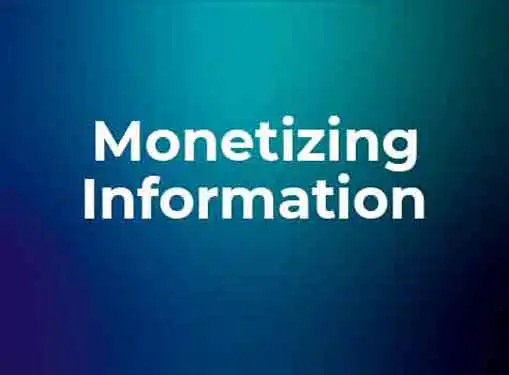Business Ideas
Charging for Your Information
Written by James Garvin for Gaebler Ventures
In the age of digital information where nearly all information is free and long established newspaper companies are sinking rapidly, how does an aspiring entrepreneur create a sustainable business model by selling their information?
There are 3 key things that will provide you the opportunity to sell your information and knowledge (also known as intangible goods):

1. Must Have - Readers want the information that you have
2. Unique - They cannot get this anywhere else
3. Quantity - You must have enough of it to sell.
While the newspaper industry and many content oriented businesses are being challenged by today's consumer sentiment towards free information, there are numerous opportunities for aspiring entrepreneurs with unique and desirable knowledge to charge readers access to what they know. Most everyone now agrees that an advertising only business model is not sufficient to build a long-term sustainable business, and for most independent writers or consultants, you simply do not create enough readers to make a worth while amount of revenue from advertising.
The simple, albeit, seemingly impossible solution is to charge for your information and knowledge. Consultants have long charged corporations premiums for access to their knowledge and information. As an individual writer or consultant, you too have the opportunity to charge premium access to your information. Information, as an intangible good, can be very difficult to measure the value of. There is no easy comparison in information from one supplier versus another since the value of that information is arbitrary and dependent on the individual trying to value your information.
For those with something unique to share, the internet allows for a very cheap and scalable channel to deliver your information to others. If you've been blogging or otherwise trying to find a way to monetize the information that you harness, do it, but you must do it an effective manner in which readers can ascertain a value of your information without paying for it first. An effective way to get to readers to pay for your premium content is to offer some of it for free and charge for the rest. It is critical that you clearly and effectively differentiate your free from your premium content and that your premium content is of high enough value that readers are willing to pay for it.
There are several ways to charge access to your premium information. Subscription is of course the most popular, however a new model that The Financial Times recently announced, was to charge for the quantity of information that readers access. In their own words "The paper lets anyone access three articles every 30 days for free or, if they register, 10 articles a month for free--but then prompts them to sign up for one of two paid-subscription options if they want to see more."
The effective strategy that the Financial Times implemented allows them to price discriminates heavy consumers of their information while still allowing low-volume readers to access information for free. After all, free customers are worth something, but as a source of information you have readers who sparingly read your information and then you have readers who read an abundance of your information and those are the readers you want to charge for your information.
James Garvin began his education studying biotechnology. In recent years he has turned his interest in technology to helping two internet startup companies. The first business was an online personal financial network and the second was an e-marketing platform created to help entrepreneurs demo their web sites. Currently a student at University of California Davis, James is spending his summer incubating two new online businesses and writing about his entrepreneur experiences.
Share this article
Additional Resources for Entrepreneurs

Conversation Board
We greatly appreciate any advice you can provide on this topic. Please contribute your insights on this topic so others can benefit.